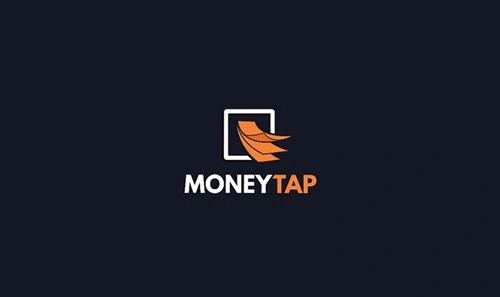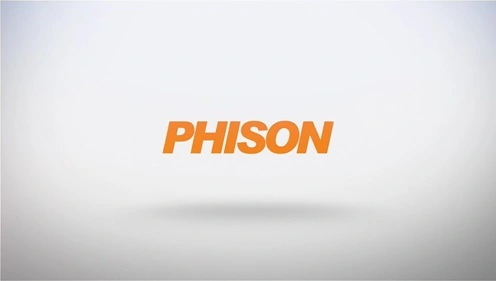MoneyTap, founded in 2015 by Bala Parthasarathy, Kunal Varma, and Anuj Kacker, is India’s first app-based credit line offering flexible, instant, and affordable personal loans. Designed to meet the financial needs of salaried individuals, MoneyTap provides a seamless and user-friendly platform for accessing credit without the hassle of traditional loan procedures. By partnering with banks and financial institutions, the app bridges the gap between borrowers and lenders, offering innovative financial solutions. This article explores MoneyTap’s business model and delves into how the platform generates revenue.
Overview of MoneyTap’s Business Model

MoneyTap operates on a B2C (Business-to-Consumer) and B2B2C (Business-to-Business-to-Consumer) model. It positions itself as a fintech company that facilitates credit access for individuals through partnerships with banks and NBFCs (Non-Banking Financial Companies). Its business model focuses on:
- Credit Line Facility: Providing users with a pre-approved credit line, which they can withdraw in parts or as needed.
- On-Demand Loans: Offering flexible repayment options with interest charged only on the amount used.
- Tech-Driven Lending: Leveraging technology and AI-driven algorithms for quick credit assessments and disbursements.
- Bank and NBFC Partnerships: Collaborating with financial institutions to extend credit to users while managing the customer acquisition and servicing process.
MoneyTap’s innovative approach allows users to access credit with minimal documentation and a fully digital process.
Revenue Streams
MoneyTap generates revenue through multiple channels by acting as an intermediary between borrowers and financial institutions:
a) Interest Income Sharing
MoneyTap partners with banks and NBFCs to provide credit to users. While the lenders disburse the loans, MoneyTap earns a share of the interest income collected from borrowers.
Revenue Model:
- Interest rates typically range between 13% and 24% per annum, depending on the borrower’s creditworthiness.
- MoneyTap takes a portion of this interest income as a referral fee or commission.
b) Loan Processing Fees
MoneyTap charges borrowers a one-time processing fee when they activate their credit line or withdraw funds.
Revenue Model:
- Processing fees are typically 2% to 4% of the loan amount.
- This fee contributes to upfront revenue for MoneyTap.
c) Subscription Fees
MoneyTap offers a unique credit line model, where users can maintain access to their approved credit limit by paying an annual subscription fee. This ensures continued access to credit without needing to reapply.
Revenue Model:
- A nominal subscription fee is charged annually, adding a steady revenue stream.
d) Late Payment Penalties
If borrowers fail to make timely repayments, MoneyTap charges late payment fees or penalties.
Revenue Model:
- Late payment charges vary based on the overdue amount and duration, incentivizing users to repay on time while contributing to the platform’s revenue.
e) Credit Insurance
MoneyTap collaborates with insurance providers to offer loan protection plans or credit insurance to users. These plans cover the loan amount in case of unforeseen events like job loss, disability, or death.
Revenue Model:
- MoneyTap earns a commission for every insurance policy sold through its platform.
f) Financial Product Cross-Selling
The app offers additional financial products, such as:
- EMI (Equated Monthly Installment) cards for shopping.
- Personal finance tools and insights.
Revenue Model:
- MoneyTap earns commissions or fees for cross-selling these products.
g) Data Monetization
MoneyTap collects a vast amount of user data, including spending patterns, repayment behavior, and financial habits. This anonymized data can be used to:
- Provide insights to partner banks and NBFCs for better risk assessment.
- Tailor financial products to customer needs.
Revenue Model:
- Financial institutions pay for access to aggregated insights or data-driven reports.
Cost Structure
MoneyTap incurs several costs to operate its platform and provide services to users:
a) Technology and Platform Maintenance
MoneyTap invests heavily in technology to:
- Ensure a seamless user experience.
- Maintain a secure and scalable platform.
- Use AI and machine learning for credit risk analysis.
b) Marketing and Customer Acquisition
MoneyTap spends significantly on:
- Digital marketing campaigns, including social media ads and Google Ads.
- Referral programs and influencer collaborations to attract new users.
c) Credit Risk Management
The company uses advanced analytics and underwriting algorithms to assess borrower creditworthiness, reducing the risk of defaults.
d) Customer Support
Maintaining a robust support system to assist users with queries, repayments, and disputes adds to operational costs.
e) Regulatory Compliance
Adhering to RBI regulations and ensuring data privacy compliance involves legal and operational costs.
Unique Features Driving Revenue Growth
MoneyTap’s success is driven by its innovative features and customer-centric approach:
a) Flexibility
Unlike traditional loans, MoneyTap offers a revolving credit line where users only pay interest on the amount they withdraw, providing a cost-effective solution.
b) Instant Approval
MoneyTap uses AI-driven algorithms to provide instant credit approvals, enhancing the user experience and speeding up the process.
c) No Collateral Requirement
MoneyTap provides unsecured credit, making it accessible to a wider audience, including those without assets to pledge.
d) Customizable EMI Options
Users can choose repayment tenures ranging from 2 months to 36 months, allowing them to manage their finances more effectively.
e) Expanding Partnerships
Collaborating with leading banks and NBFCs enables MoneyTap to reach a larger audience and scale its operations.
Challenges and Opportunities
Challenges
- High Competition: Competing with platforms like KreditBee, EarlySalary, and PaySense.
- Default Risk: As an unsecured lending platform, MoneyTap faces the challenge of managing non-performing assets (NPAs).
- Regulatory Compliance: Adapting to evolving regulations in the digital lending space can impact operations.
Opportunities
- Rising Demand for Credit: The increasing need for short-term loans among salaried individuals and small businesses presents significant growth potential.
- Tier 2 and Tier 3 Markets: Expanding into smaller cities can tap into a largely underserved population.
- Financial Literacy Campaigns: Educating users about responsible borrowing can build trust and increase adoption.
- Diversifying Products: Offering additional financial services, such as savings accounts or investment tools, can diversify revenue streams.
Financial Overview
MoneyTap has raised funding from investors such as Sequoia India, Prime Venture Partners, and MegaDelta Capital. As of the latest reports, MoneyTap has disbursed thousands of crores in credit to users across India. The company’s focus on technology, customer experience, and partnerships has contributed to its steady growth in the fintech space.
Conclusion
MoneyTap’s business model combines innovation, convenience, and financial accessibility to address the growing demand for credit among India’s urban population. By leveraging technology and partnering with financial institutions, MoneyTap has created a scalable and profitable platform. With opportunities for expansion in underserved markets and new product offerings, MoneyTap is well-positioned to remain a key player in India’s rapidly evolving digital lending ecosystem.

